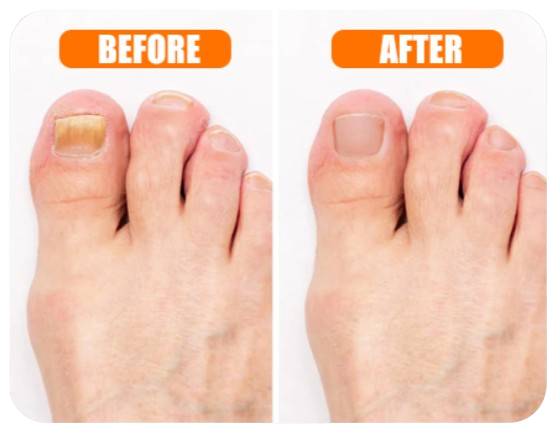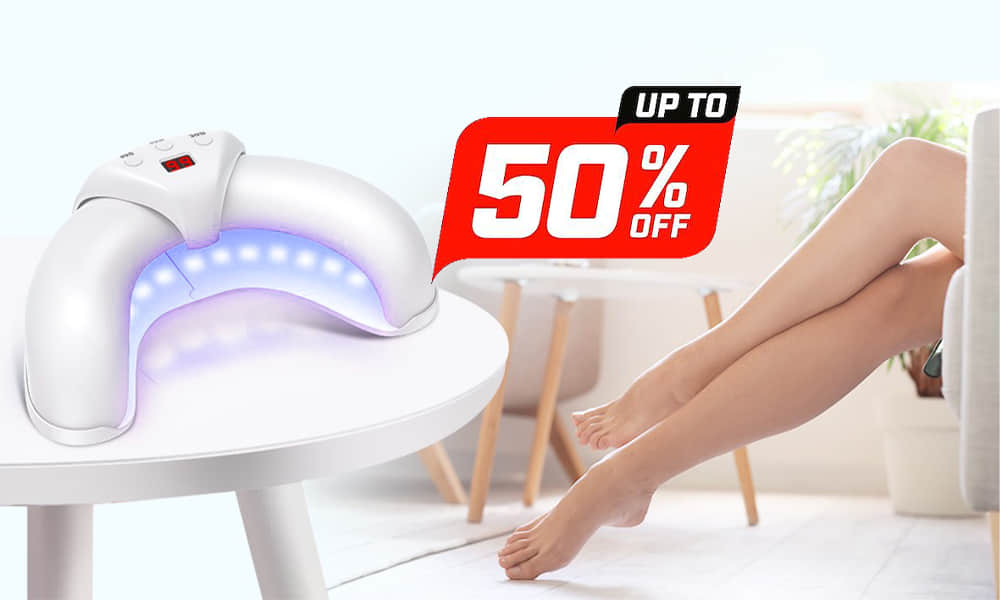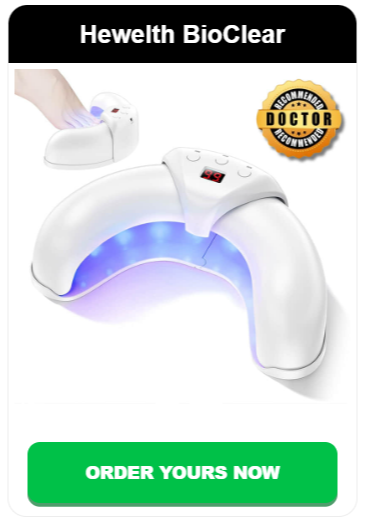Laser Toenail Fungus Removal Reviews – Is It Worth Buying?
Contents
- 1 🔬 Laser Toenail Fungus Removal Explained: Safe, Fast & Effective! 🚫🦶
- 2 Understanding Toenail Fungus
- 3 Toenail Fungus Treatments
- 4 What is Laser Toenail Fungus Removal?
- 5 How Does Laser Toenail Fungus Removal Work?
- 6 The Laser Toenail Fungus Removal Procedure
- 7 Benefits of Laser Toenail Fungus Removal
- 8 Is Laser Toenail Fungus Removal Right for You?
- 9 Conclusion
🔬 Laser Toenail Fungus Removal Explained: Safe, Fast & Effective! 🚫🦶
Toenail fungus is a common yet frustrating condition that affects millions of people worldwide. Often resistant to over-the-counter treatments, it can cause discomfort, embarrassment, and even pain.
Laser Toenail Fungus Removal is a quick, non-invasive treatment that uses focused light to eliminate fungal infections, promoting healthier, clear toenails.
While traditional treatments may take weeks or months to show results, modern advancements in medical technology have provided a more effective solution: Laser Toenail Fungus Removal.
At Nuvectra Medical, we specialize in offering state-of-the-art treatments to help you regain clear, healthy nails.
In this comprehensive guide, we’ll dive into what toenail fungus is, how laser therapy works, and why it may be the perfect option for treating your fungal infection.
Understanding Toenail Fungus
Before diving into the laser treatment itself, it’s important to understand what toenail fungus is and why it occurs.
Fungal infections of the toenails (onychomycosis) are caused by a variety of fungi, the most common being dermatophytes.
These microscopic organisms thrive in warm, moist environments such as inside your shoes, making your toenails an ideal breeding ground.
Toenail fungus usually begins with a small white or yellow spot beneath the tip of the toenail, often spreading deeper into the nail as the infection progresses.
As the fungus grows, it can cause the toenail to become thickened, brittle, discolored, and even painful. While toenail fungus is generally not harmful, it can lead to permanent damage to the nail if left untreated.
Toenail Fungus Treatments
When it comes to treating toenail fungus, there are several options available, from topical creams to oral medications. However, each treatment has its drawbacks.
Topical Treatments
Topical antifungal creams or lacquers are often the first line of defense against toenail fungus. While they may be effective in mild cases, these treatments usually take months to show results, and they don’t always penetrate deeply enough to fully eradicate the fungus.
Oral Antifungal Medications
Oral antifungal drugs like terbinafine (Lamisil) and itraconazole (Sporanox) are often prescribed for more severe infections. They work by circulating antifungal medication throughout the bloodstream, targeting the infection from within. While effective, oral medications can come with side effects, including liver toxicity and gastrointestinal issues, making them unsuitable for some patients.
Home Remedies
Some people turn to home remedies such as vinegar soaks, tea tree oil, or baking soda applications. While these may provide temporary relief or slow down the growth of the fungus, they are generally not effective for completely eliminating the infection.
While these treatments may provide relief or slow down the progression of toenail fungus, they don’t always deliver long-term results. This is where Laser Toenail Fungus Removal comes into play.

What is Laser Toenail Fungus Removal?
Laser toenail fungus removal is a non-invasive treatment option that uses focused laser light to target and eliminate the fungus causing the infection.
The laser is specifically designed to penetrate the toenail without damaging the surrounding tissue, making it a safe and effective solution for toenail fungus.
During the procedure, a trained medical professional directs the laser onto the affected toenail. The laser energy is absorbed by the fungal cells, which ultimately causes them to break down and die.
The surrounding healthy tissue remains unaffected, and the fungus is eliminated without the need for invasive surgery or prolonged recovery times.
How Does Laser Toenail Fungus Removal Work?
Laser toenail fungus treatment works by using focused light energy to penetrate the nail and destroy the fungus located beneath the surface.
The laser light targets the pigment in the fungal cells, which absorbs the energy. This process heats the cells, causing them to break down and die, while leaving the healthy tissue unharmed.
The key advantages of laser treatment for toenail fungus include:
- Precision: The laser can specifically target the infected areas without damaging the surrounding healthy tissue. This makes it a much more precise treatment option compared to topical creams or oral medications.
- Non-Invasive: Unlike traditional treatments that may involve cutting the toenail or taking oral medications with potential side effects, laser therapy is non-invasive, requiring no incisions or medication.
- Minimal Discomfort: Patients generally report minimal pain or discomfort during the procedure. Some individuals may experience a warm sensation or mild tingling, but these sensations are typically tolerable.
- Quick and Convenient: Laser toenail fungus removal usually takes only a few minutes per toenail. Most people can return to their normal activities immediately after the procedure without any downtime.
- No Need for Anesthesia: Unlike other surgical options, laser treatment does not require anesthesia. This reduces the risks and recovery time typically associated with invasive procedures.
The Laser Toenail Fungus Removal Procedure
The laser treatment for toenail fungus is relatively straightforward and can be performed in a medical office setting. Here’s a general overview of what you can expect during your laser toenail fungus removal procedure:
- Consultation and Assessment Before the procedure, you’ll have a consultation with a healthcare provider to assess your condition and determine if laser treatment is right for you. During this visit, your provider will examine your toenail(s), discuss your medical history, and explain the laser procedure in detail.
- Preparation On the day of the treatment, you’ll be asked to sit back and relax in a comfortable chair. Your healthcare provider will clean and prepare the affected toenail(s) by trimming any excess nail or debris. The procedure is quick and usually does not require any numbing agents.
- Laser Application The provider will then use a specialized laser device to direct focused light at the infected toenail. The laser light penetrates the toenail and targets the fungal cells beneath the surface. Most patients report little to no discomfort during the procedure, though you may feel a mild warming or tingling sensation as the laser is applied.
- Post-Treatment Care After the treatment, you can immediately resume your normal activities. There is no recovery time, and you won’t need to take any medications. Your healthcare provider will provide you with instructions on caring for your toenail while it heals, which may include keeping the area clean and dry.
Benefits of Laser Toenail Fungus Removal
Laser toenail fungus removal has several advantages over traditional treatment methods. Some of the most notable benefits include:
- Faster Results Unlike topical treatments that can take months to show improvement, laser therapy often shows visible results within a few weeks. This makes it an appealing option for people who want faster relief from the unsightly and uncomfortable symptoms of toenail fungus.
- Long-Term Effectiveness Laser treatment not only targets the existing fungus but also helps prevent future infections. Because the laser destroys the fungus at its root, the chances of recurrence are minimized.
- Minimal Side Effects One of the key benefits of laser toenail fungus removal is the minimal side effects. Unlike oral antifungal medications that can cause liver damage or gastrointestinal distress, laser treatment is safe and free from systemic side effects.
- No Downtime Laser toenail fungus removal is a non-invasive procedure that requires no downtime. After the treatment, you can resume your daily activities without any restrictions, making it a convenient option for people with busy lifestyles.
- Safe for Most People Laser toenail fungus removal is generally safe for most individuals. It is especially beneficial for people who cannot tolerate oral antifungal medications due to medical conditions or side effects.
Is Laser Toenail Fungus Removal Right for You?
Laser toenail fungus removal is an effective treatment option for many individuals with toenail fungus. However, it may not be suitable for everyone.
Your healthcare provider will help determine if laser therapy is right for you based on factors such as the severity of your infection, your overall health, and any underlying medical conditions.
If you’re considering laser toenail fungus removal, it’s important to understand that multiple treatments may be necessary to fully eliminate the infection, especially if the fungus is deep within the nail.
On average, patients require 2–3 sessions spaced a few weeks apart to achieve the best results. Your provider will discuss the treatment plan with you during your consultation.
Aftercare and Results
Once your treatment is complete, you’ll be given guidelines on how to care for your toenail as it heals. Although there is minimal downtime, it’s important to follow these instructions to ensure the best results.
- Keep the Area Clean and Dry After the treatment, make sure to keep the affected toenail clean and dry to avoid re-infection. Moisture can promote fungal growth, so maintaining dryness is key.
- Avoid Tight or Damp Shoes Tight shoes or damp environments can encourage fungal growth. Opt for breathable footwear, and avoid walking barefoot in damp public spaces such as swimming pools or locker rooms.
- Monitor Your Toenail’s Progress As the toenail heals, you’ll likely notice the discoloration and brittleness begin to improve. New, healthy nail growth should begin to emerge from the base of the nail, gradually replacing the infected portion.
- Follow-Up Appointments Your healthcare provider may schedule follow-up appointments to monitor the progress of your healing. In some cases, additional laser treatments may be recommended to ensure complete eradication of the fungus.
Conclusion
Toenail fungus can be a persistent and often embarrassing condition, but thanks to modern advancements in medical technology, there’s now an effective solution: Laser Toenail Fungus Removal.
This non-invasive, quick, and effective treatment offers many benefits, including faster results, minimal discomfort, and fewer side effects compared to traditional treatments.
If you’re tired of dealing with unsightly toenails and ineffective treatments, laser therapy may be the solution you’ve been searching for.
At Nuvectra Medical, we specialize in providing cutting-edge treatments to help you achieve clear, healthy nails once again.
For more information about laser toenail fungus removal and to schedule your consultation, contact us today. Let us help you take the first step toward healthier, fungus-free toenails!
.
Reference links
- Toenail Fungus Treatment: https://www.webmd.com/skin-problems-and-treatments/toenail-fungus
- Nail Fungus Treatment: https://www.mayoclinic.org/diseases-conditions/nail-fungus/diagnosis-treatment/drc-20364652
- Laser Treatment for Toenail Fungus: https://www.healthline.com/health/laser-treatment-for-toenail-fungu
- Laser Treatment for Nail Fungus: https://pubmed.ncbi.nlm.nih.gov/25887694/



